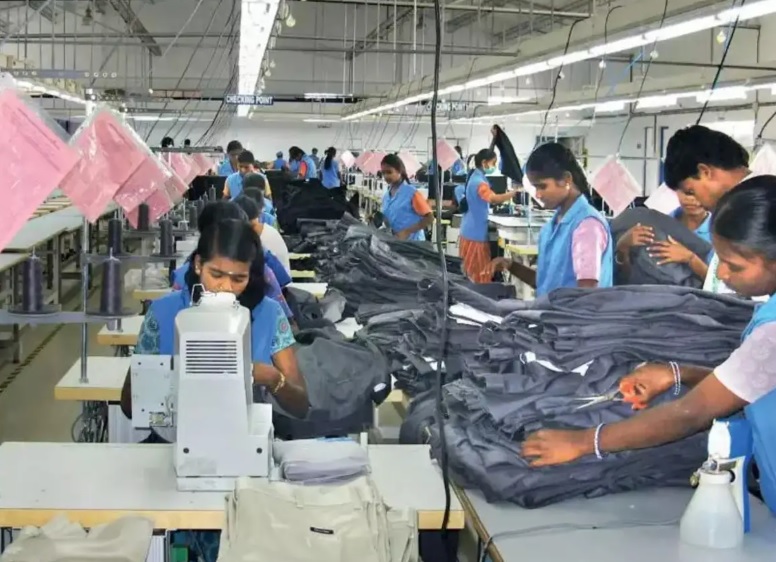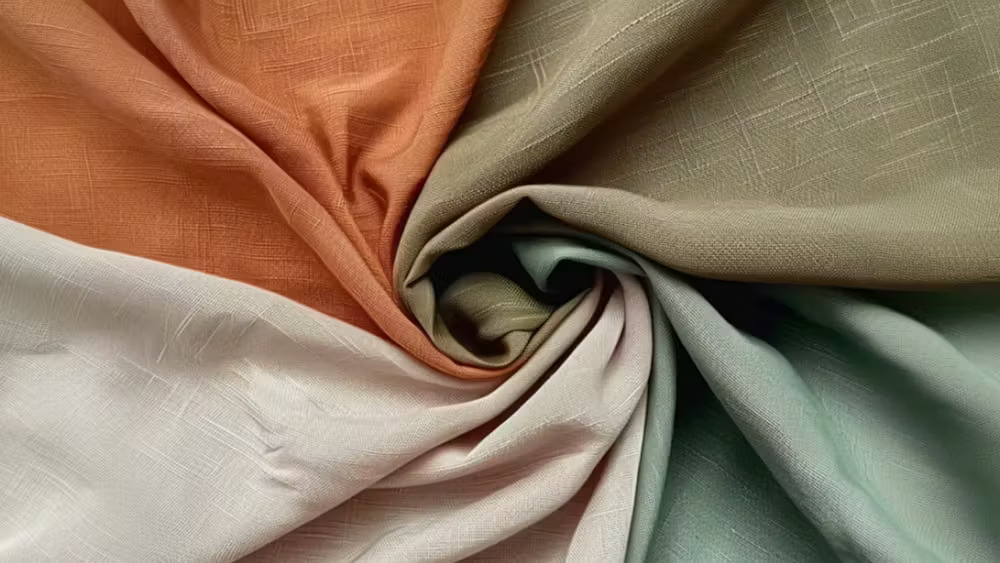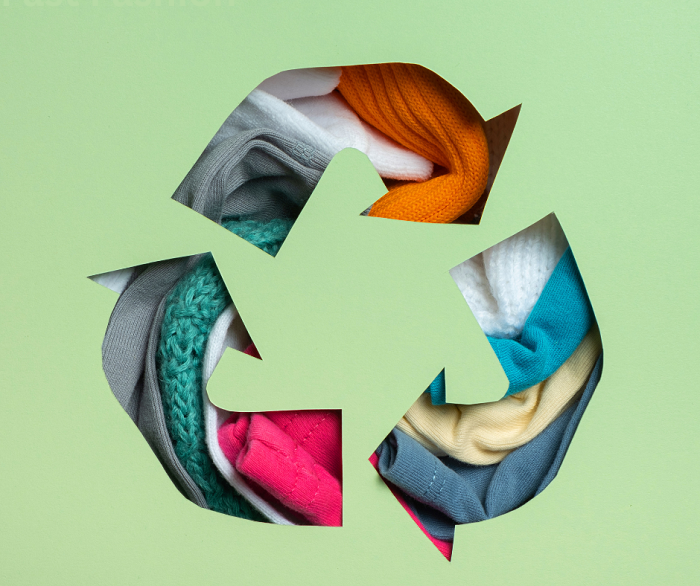FW
OC Mix was held in the US from September 26 to 27. It featured eight booths carrying 20 contemporary clothing and accessories brands. This is a compact trade event organized four times a year by Z Supply. OC Mix is a curated show representing the best of the Southern California fashion industry. It’s about creating a space for buyers and brands to come together and work in an easy, relaxed environment. The intimate show gives buyers the opportunity to preview contemporary apparel and accessory brands in a location that makes doing business more seamless.
This show attracts people who are open to new vendors. Participants included Wildfire Mercantile, an upscale clothing store that carries higher-end Western-style apparel and boho looks. Other stores included the Tanya B Boutique, The Fort & The Clubhouse, The Denim Bar, Johnny Jeans, Aniche Boutique, Blue Windows and Level 99, a hip twill-and-denim-based brand.
Z Supply’s labels include Black Swan, Others Follow, White Crow and Rag Poets. The show is good for crossover business from other vendors whose lines might complement each other.
The two-day event had a low-key vibe with lots of refreshments and food and a casual feel. Buyers were treated to a complimentary breakfast, lunch and a wine-and-cheese happy hour on both days.
Workers in Cambodia’s textiles and footwear industry will get a 11 per cent hike in minimum monthly wage from next year. Wages for garment workers have increased over 150 per cent over the past five years. The country has had to tackle competitiveness, with some arguing wage increases have made Cambodia less appealing for some firms.
The garment industry employs an estimated 7,00,000 workers in Cambodia, helping to sustain rural livelihoods in one of the world’s poorest countries. The sector generates seven billion dollars annually for the economy. The government will continue to delay taxing profits in the textile sector and eliminate export management fees.
Of course, workers’ unions are happy with the hike. But some garment manufacturers say the new minimum wage is beyond their affordability and the competitive level of the country. The garment manufacturing industry in Cambodia has become the fifth largest apparel supplier to the European Union behind China, Bangladesh, Turkey and India.
Improving labor productivity would be fundamental for Cambodia to remain competitive, given rising competition from other low-wage garment exporting countries. Europe today takes up 43 per cent of the Cambodian sector’s exports as opposed to 29 per cent taken by the US market.
Denimsandjeans.com was held in Bangalore from September 25 to 26. Over 1,500 buyers visited the two-day show to explore niche products exhibited by around 30 companies from Brazil, Bangladesh, Switzerland, Turkey, Ethiopia, Spain, Italy and many others. Major retailers and brands such as Marks & Spencer, H&M, GAP, VF Corporation, Li & Fung, Zara, Landmark, Tesco, Aditya Birla Fashion, Arvind Brands, Raymond and many others marked their presence at the show.
Teams from export houses including Gokaldas Exports, Orient Craft and many others also visited the show. The show provided a single platform to the global denim industry, be it manufacturers, buyers, suppliers or traders to showcase and explore innovations in denim. It brought together major stakeholders in the supply chain.
Seminars on latest innovations, trends, technologies, developments and sustainability in the denim industry were also held during the two days. India is the second largest manufacturer of denim fabrics after China and the second biggest consumer of denim apparel globally. The country, with immense potential, is expected to grow at a fast pace in the coming years. India is set to get a big lead over the US and the EU in the coming years, as consumption increases in Tier II and III cities.
Bangladesh is modernising 208 readymade garment factories across the country into international standard green buildings. The facilities will have safer working conditions. After the collapse of Rana Plaza in 2013, the country has taken multiple initiatives. The initiatives include safe building and fire safety arrangements to ensure a sound and congenial working atmosphere in the country’s garment industry.
Since 2011, 67 Bangladeshi readymade garment factories have received LEED Certification from the US Green Building Council, one of the top global green buildings rating systems. Bangladesh’s garment export earnings have been increasing day-by-day, yet to achieve 50 billion dollar target by 2021, overall productivity needs to be upgraded. The textile industry employs around four million citizens.
The industry registered $28.14 billion in export earnings in the recently concluded 2016-17 fiscal year. The readymade garment sector is the country’s largest source for export earnings. Readymade garments exported from Bangladesh represent around six per cent of the global clothing market. The country is the world’s second largest readymade garment exporter with advantages like a low labor cost, favorable business climate, and well-established transport facility. International fashion brands like Zara, H&M, Gap and Levi’s manufacture and import clothes from Bangladesh.
ISPO Munich will be held from January 28 to 31, 2018. More than 2,700 exhibitors will present latest trends and innovations in the sports business. There is 15 per cent more requests for spaces in comparison to last year’s event. Under the umbrella of snow sports, manufacturers will present the whole winter sports product spectrum: from skiing, free skiing and snowboarding, to snowshoeing, cross-country skiing and tobogganing. The event will once again showcase the variety of winter sports.
To accommodate increased interest, the hall layout has been expanded in reflection of current trends in the sports business. Visitors will find everything relating to trends in hardware, clothing and accessories in the snow sports segment. An outdoor area is being launched. Visitors will find trends and new innovations in mountain climbing, climbing, ice climbing, bouldering, trail running, camping and water sports.
In 2017, the trade fair featured some trends that will be present in the industry in the future – like virtual reality glasses for the emotional buying experience or sports devices that can be controlled via apps. In 2018, industry representatives will once again exhibit what they will be offering customers and athletes in the future. Digital concepts will be displayed--RFID in functional clothing, wi-fi and wearables, and smart products to support sports activities.
Partnership for Cleaner Textile (PaCT) is a project in Bangladesh that advises garment factories to adopt modern technologies and reduce water and energy consumption. The project has been run since 2013 by the International Finance Corporation (IFC). Now, IFC plans to spend $7 million for implementing the second phase of the program. The first one was implemented in 215 factories at a cost of $11 million.
In its first phase, PaCT helped save 21.6 billion liters of water. It also saved 2.5 million megawatt hours of energy per year. During the second phase, IFC is targeting to save 32 million cubic liters of water annually and 3.8 million megawatt hours of electricity in 250 weaving, spinning, wet dyeing and finishing factories. It also aims at annually reducing greenhouse gas emissions, wastewater discharge and chemical use.
The other benefits of the program include better productivity, investments with higher returns and a cleaner environment for the community. Despite having one of the lowest per capita carbon dioxide emissions, Bangladesh has stepped up its environmental sustainability initiatives. At present, Bangladesh has 67 green garment factories and 280 more are in the pipeline. PaCT is the largest textile-based resource efficiency program in the world.
The Synthetic and Rayon Textile Export Promotion Council (SRTEPC) wants a reduction of GST on yarns from 18 per cent to 12 per cent. With GST, the tax rate on manmade yarns has been increased from 12 per cent to 18 per cent, which has made the cost of fabrics higher.
SRTEPC says, GST has had an adverse impact on the exports of manmade fiber textiles and if the decline is not arrested employment generation and foreign exchange earnings will be affected. GST duty on spun, textured, fully drawn, warp and knit yarns is 18 per cent. The GST on fabrics is five per cent. This has resulted in huge accumulation of unutilized credit with weavers.
Blocked un-rebated state input taxes and duties like transmission charges, electricity duty, cross subsidy on electricity bills, water cess, green tax, local body taxes, road taxes, labor cess etc. are about five per cent of the freight on board value of textile exports. These are not adjusted in drawback or rebate of state levies scheme to yarn and fabric exporters.
SRTEPC has urged for an immediate reduction of GST on yarns. Another fallout from GST is the big threat of imports of fabrics and garments from China, Bangladesh and Sri Lanka. Earlier imports had a 12.5 per cent countervailing duty, which wasn’t adjustable. Now they would attract five per cent GST, which is adjustable against subsequent sales.
Turkey's home textile makers are hiring people to represent their brands in other countries, to help market their products better and increase sales. One of the biggest problems Turkey’s mill owners face when doing business abroad is not knowing the language and culture of particular regions. Brand ambassadors are expected to smoothen the interface.
In terms of business, Turkey feels the bad days are over in terms of exports and that reaching double digits in home textile exports to Europe is a promising improvement. The industry has the necessary infrastructure and raw materials. Each kilogram of home textile product is priced around $12, making it more profitable than the automotive sector. Eighty per cent of the value produced in the automotive comes from abroad, while in the case of home textiles it is only 25 per cent. The rest is processed in Turkey.
The Russian crisis has forced Turkish exporters to enter new markets as far as the Far East. Turkey mostly exports towels to the US and upholstery fabric and curtains to the EU and China. China's growing number of wealthy wants Turkish fabric on their furniture. The home textile industry is seeking permanent markets in order to be able to expand in other countries.
"The latest Wazir Textile Index (WTI) highlights that raw material prices increased in Q1 FY18 compared to Q1 FY17. On an average, raw cotton, viscose staple fibre and polyester staple fibre prices increased by 15 per cent, 10 per cent and 3 per cent respectively in Q1 FY18. Cotton yarn and polyester viscose blended yarn prices grew at 10 per cent and 11 per cent respectively. However, polyester cotton blended yarn saw a decline of 9 per cent in Q1 FY18 compared to Q1 FY17 on an average."
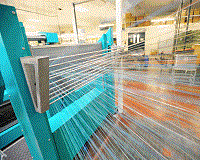
The latest Wazir Textile Index (WTI) highlights that raw material prices increased in Q1 FY18 compared to Q1 FY17. On an average, raw cotton, viscose staple fibre and polyester staple fibre prices increased by 15 per cent, 10 per cent and 3 per cent respectively in Q1 FY18. Cotton yarn and polyester viscose blended yarn prices grew at 10 per cent and 11 per cent respectively. However, polyester cotton blended yarn saw a decline of 9 per cent in Q1 FY18 compared to Q1 FY17 on an average. The WTI shows that overall, Indian textile and apparel mill sector exhibited growth in sales during the first quarter of financial year 2017-18. However, there has been tremendous pressure on margins due to increased input factor costs like raw material and manpower resulting in steep decline in EBIDTA levels.
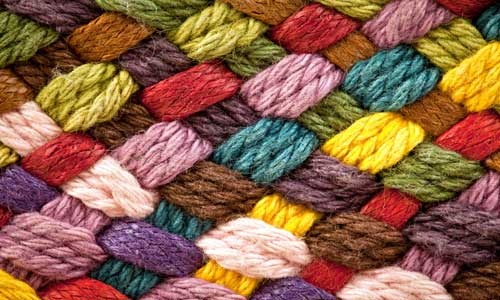
Consolidated sales of top 10 selected companies was Rs 10,122 crores in Q1 FY18 compared to Rs 8,961 crores in Q1 FY16. The WTI EBITDA was calculated to be 77.7 in Q1 FY18. This reflects an overall decline of 25 per cent in EBITDA margin in Q1 FY18. EBITDA decreased significantly due to impact of increase in raw material cost and employee costs. Consolidated EBITDA margin of top selected companies was 12 per cent in Q1 FY18 declining from 16.6 per cent in Q1 FY17. The WTI Cost for raw material (RM), manpower and others were 122.2, 130.5 & 112.9 in Q1 FY18. There was a significant increase in raw material prices, which resulted in overall cost, while manpower costs increased on the back of increasing labour wages. Consolidated RM cost constituted 54.9 per cent of sales in Q1 FY18, while consolidated manpower cost constituted 9.8 per cent of sales. The impact of the cost increase was visible in the declining EBITDA margin.
Growth in exports
Overall textiles and apparel exports in Q1 FY18 was $9.5 billion increasing at a healthy 8 per cent from previous year. Export of fibre, apparel, home textiles and filament has grown in Q1 FY18 as compared to Q1 FY17, fibre having the majority share. Highest growth was observed in exports of fibre growing at a rate of 48 per cent. Exports of yarn fell by 11 per cent in Q1 FY18. US and UAE were the largest export markets for India with a cumulative share of ~35 per cent. Share of UAE increased slightly in Q1 FY18.
Increased imports
The overall textiles and apparel imports in Q1 FY18 was around $1.7bn increasing significantly at 23 per cent from the previous year. Imports growth in Q1 FY18 was primarily due to a tremendous increase in fibre imports by 99 per cent over Q1 FY17. However, imports of other major categories yarn, home T&A declined significantly. China continues to be the largest import partner for India. Import share of USA increased significantly from 7 per cent to 13 per cent in Q1 FY18 while import share of Bangladesh declined from 10 per cent to 4 per cent in Q1 FY18.
In the first eight months of 2017, Vietnam’s exports of textile fibers increased 15 per cent in volume and 24 per cent in value over the same period last year. Fiber and yarn exports to Taiwan surged sharply, up 70 per cent in volume terms and 58 per cent in value terms. In addition, exports to Hong Kong, India, Egypt also reached over 30 per cent growth. Exports to Japan were up 35 per cent in volume and 40 per cent in value terms.
The quality of Vietnam’s cotton fiber is good and meets importers requirements. Vietnam’s yarn industry is well positioned on the world’s fiber map and is able to compete well with major countries such as India, China, Turkey and some Middle East countries.
Besides the satisfactory export results, Vietnamese yarn industry is now actively involved in the development of yarn industry for the domestic textile and dyeing. In addition, Vietnam has also been active in high-end cotton yarn products for high quality of textiles. In addition to domestic production, Vietnam's yarn industry is also exporting large volumes annually.
Currently almost the entire cotton needed for production in Vietnam is imported. In the first eight months of 2017, Vietnam’s imports of cotton were up 25 per cent in volume and 47 per cent in value terms.







